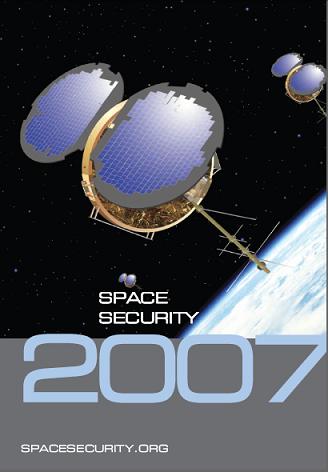As it turns out, SPACE SECURITY 2007 is exclusively dedicated to space security issues, which include, among other things, space warfare systems, trends in the field of international agreements dealing with space, dealing with space debris that endangers various satellites, and various attempts to design international agreements for peaceful uses of space

Tal Inbar, Head of the Center for Space Research, Fisher Institute for Strategic Air and Space Research
A report by the Canadian organization SPACE SECURITY INDEX was published today, and it indicates the main trends in space security, for the past year and the coming year. This special report is published every year, and is supported by several parties, including the Ministry of Foreign Affairs and the Ministry of Commerce of Canada. This report is the only one published in the world and is dedicated exclusively to space security issues, which include, among other things, space warfare systems, trends in the field of international agreements dealing with space, dealing with space debris that endangers various satellites, and various attempts to design international agreements on peaceful uses of space.
The report is a central tool in the analysis of space trends in the field of security around the world, and is the work of many researchers, who are engaged in collecting data from all the countries involved in space exploration and space technologies, in the analysis of economic trends and the examination of doctrinal documents published in various countries and their engagement in space policy in national aspects.
The full report can be downloaded at the link: http://www.spacesecurity.org/SSI2007.pdf
The main trends emerging from the published report:
• A large increase in the amount of space debris - mainly remnants from the satellite destruction experiment by China conducted in January 2007
• Growing concern over the issue of space debris - and an attempt to draft an international space code of conduct to reduce the number of space debris
• International efforts to establish an international monitoring mechanism for space debris to prevent collisions with satellites continue
• The increase in the demand for bandwidth in the field of communication satellites and entry into new frequency ranges continues
• Increasing demand for positioning satellites in the geostationary belt. Competition between satellite operators is intensifying, as is the fear of electromagnetic interference between neighboring satellites.
• Increasing military involvement in space - the involvement in military doctrines of operating space assets for security purposes is increasing in the USA, Russia, Europe and China.
• The increase in the number of countries that have satellites in space continues: today 47 countries are equipped with satellites in space
• Change in priorities and funding of national space programs - the trend of dual use of satellites (especially in the field of navigation and remote sensing) is becoming central to the policies of the USA, Russia, Europe and China.
• Continued growth in international collaborations in the field of space, in launches, research satellites and the International Space Station
Commercial space
• Continued growth in orders from the global space industries
• The trend of cheapening commercial launches into space continues
• Government subsidies and national security issues continue to be significant factors in the business space sector - especially in the two international security regimes MTCR (restrictions on the export of missile technologies) and ITAR, a security regime that limits the export of combat systems and related systems. These limitations constitute real setbacks and interference for space industries in various countries.
Military space
• The USA and Russia continue to lead in the field of deployment and placement of military and security space systems
• China and Europe invest large sums in military space systems - especially in the field of communications and navigation
• China is increasing its use of tactically oriented photography satellites
• Germany began operating a SAR satellite system for military uses
Protection of space assets
• Russia and the USA lead the field of detecting the launches of ballistic missiles using dedicated satellites
• The US leads the world in the field of technologies for detecting attacks on satellites, including laser glare and jamming
תקשורת
• Concern regarding the protection of satellite ground stations, especially against terrorist attacks
• Improvement in technologies that protect communication satellites from disrupting communications to and from them
• Improving the satellites' resistance to radiation damage and hardening their sub-systems
• The US and Russia are developing rapid recovery capabilities from attacks on their space assets
• The USA is a leader in the development of "space situational awareness" systems
